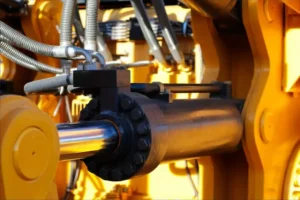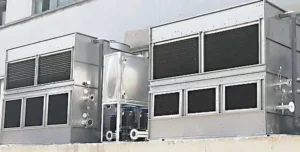Introduction to Metal Melting Furnaces
What is a Metal Melting Furnace?
A metal melting furnace is a specialized piece of equipment designed to heat and melt metals to their liquid form. This process is crucial in various industries, including manufacturing, metalworking, and recycling, where metals need to be reshaped, cast, or alloyed. The furnace operates at extremely high temperatures, sufficient to liquefy metals like iron, aluminum, and copper.
History and Evolution of Metal Melting Furnaces
The history of metal melting furnaces dates back to ancient civilizations where rudimentary furnaces were used to produce metal tools and weapons. Over centuries, these furnaces have evolved from simple pit furnaces to sophisticated, high-tech equipment capable of precisely controlled melting processes. Modern furnaces incorporate advanced technologies to improve efficiency, safety, and environmental sustainability.
Types of Metal Melting Furnaces
Electric Arc Furnaces
Electric arc furnaces (EAF) use an electric arc to generate heat, melting scrap metal or raw material. They are widely used in steelmaking and can achieve very high temperatures quickly, making them efficient and versatile.
Induction Furnaces
Induction furnaces use electromagnetic induction to heat and melt metal. They are known for their precision, energy efficiency, and ability to melt a wide range of metals, making them popular in both industrial and small-scale operations.
Cupola Furnaces
Cupola furnaces are vertical cylindrical furnaces traditionally used in foundries to melt cast iron. They operate continuously and are favored for their simplicity and ability to handle large volumes of metal.
Crucible Furnaces
Crucible furnaces involve melting metal within a container called a crucible, which is heated by external sources. They are ideal for small-scale operations and are commonly used in jewelry making and laboratory settings.
Rotary Furnaces
Rotary furnaces rotate during the melting process, ensuring uniform heat distribution and efficient mixing of the metal. They are used for melting non-ferrous metals and in recycling applications.
How Metal Melting Furnaces Work
Basic Principles of Metal Melting
Metal melting furnaces operate by generating and maintaining high temperatures to transition solid metal into a liquid state. This involves heat sources such as electric arcs, induction coils, or combustion processes.
Detailed Explanation of Furnace Mechanisms
Each type of furnace has a unique mechanism. For instance, electric arc furnaces create an arc between electrodes, generating intense heat, while induction furnaces use alternating currents to produce heat through electromagnetic induction. Crucible furnaces rely on external burners or electric heating elements.
Applications of Metal Melting Furnaces
Industrial Applications
Metal melting furnaces are integral to industries like automotive, aerospace, and construction, where they are used to produce parts and materials through casting and alloying processes.
Foundries and Casting
Foundries utilize metal melting furnaces to produce cast metal products. The molten metal is poured into molds to create items like engine blocks, pipes, and machinery components.
Jewelry Making
In jewelry making, small-scale crucible furnaces melt precious metals such as gold, silver, and platinum, allowing artisans to cast intricate designs.
Recycling Metals
Metal melting furnaces play a crucial role in recycling operations by melting scrap metal, which can be purified and reused, reducing the need for new raw materials.
Choosing the Right Metal Melting Furnace
Factors to Consider
When selecting a metal melting furnace, consider factors such as the type of metal, production volume, energy efficiency, and budget. The specific requirements of your operation will determine the best furnace type.
Comparing Different Types of Furnaces
Each furnace type has its advantages. Electric arc furnaces are powerful and fast, induction furnaces offer precision, cupola furnaces handle large volumes, crucible furnaces are versatile for small batches, and rotary furnaces ensure uniform melting.
Cost and Efficiency Analysis
Evaluating the cost and efficiency of a furnace involves considering initial investment, operating costs, maintenance, and energy consumption. Energy-efficient furnaces may have higher upfront costs but lower long-term operating expenses.
Maintenance and Safety Tips
Routine Maintenance Practices
Regular maintenance ensures the longevity and efficiency of your furnace. This includes cleaning, inspecting components, and checking for wear and tear. Adhering to a maintenance schedule can prevent costly breakdowns.
Safety Precautions and Best Practices
Operating a metal melting furnace involves inherent risks. Safety precautions include wearing protective gear, maintaining proper ventilation, training operators, and adhering to safety guidelines to prevent accidents.
Common Issues and Troubleshooting
Common issues with metal melting furnaces include overheating, inconsistent melting, and component failures. Troubleshooting involves identifying the problem, performing repairs, and consulting the manufacturer’s guidelines.
Innovations in Metal Melting Furnace Technology
Recent Technological Advancements
Recent advancements in furnace technology focus on improving efficiency, reducing energy consumption, and enhancing control over the melting process. Innovations include automated control systems, better insulation materials, and advanced monitoring tools.
Future Trends in Metal Melting Furnaces
Future trends point towards eco-friendly technologies, integration of artificial intelligence for process optimization, and further developments in energy-efficient designs to meet growing environmental regulations.
Environmental Impact and Sustainability
Environmental Concerns Related to Metal Melting
Metal melting can have significant environmental impacts, including high energy consumption and emissions of greenhouse gases and pollutants. Addressing these concerns is crucial for sustainable operations.
Eco-friendly Practices and Technologies
Implementing eco-friendly practices such as using renewable energy sources, recycling waste heat, and adopting cleaner technologies can mitigate the environmental impact of metal melting furnaces.
Regulations and Compliance
Compliance with environmental regulations ensures that furnace operations do not harm the environment. Staying updated with laws and standards is essential for legal and responsible operation.
Frequently Asked Questions (FAQs)
Common Queries about Metal Melting Furnaces
Q: What metals can be melted in a furnace?
A: Metals such as iron, steel, aluminum, copper, gold, and silver can be melted in different types of furnaces.
Q: How do I choose the right furnace for my needs?
A: Consider the type of metal, production volume, efficiency, and budget when selecting a furnace.
Q: What safety measures should I take when using a metal melting furnace?
A: Wear protective gear, ensure proper ventilation, follow operational guidelines, and provide adequate training to operators.
Expert Answers and Advice
Q: Can I use a single furnace for different metals?
A: Yes, but it depends on the furnace type and its versatility. Induction and crucible furnaces are often suitable for multiple metals.
Q: How can I improve the efficiency of my furnace?
A: Regular maintenance, using energy-efficient technologies, and optimizing the melting process can enhance furnace efficiency.
In conclusion, understanding the different types of metal melting furnaces, their applications, and the considerations for choosing the right one can significantly impact the efficiency and success of your metalworking operations. By staying informed about technological advancements and adhering to best practices for maintenance and safety, you can ensure your furnace operates optimally and sustainably.







